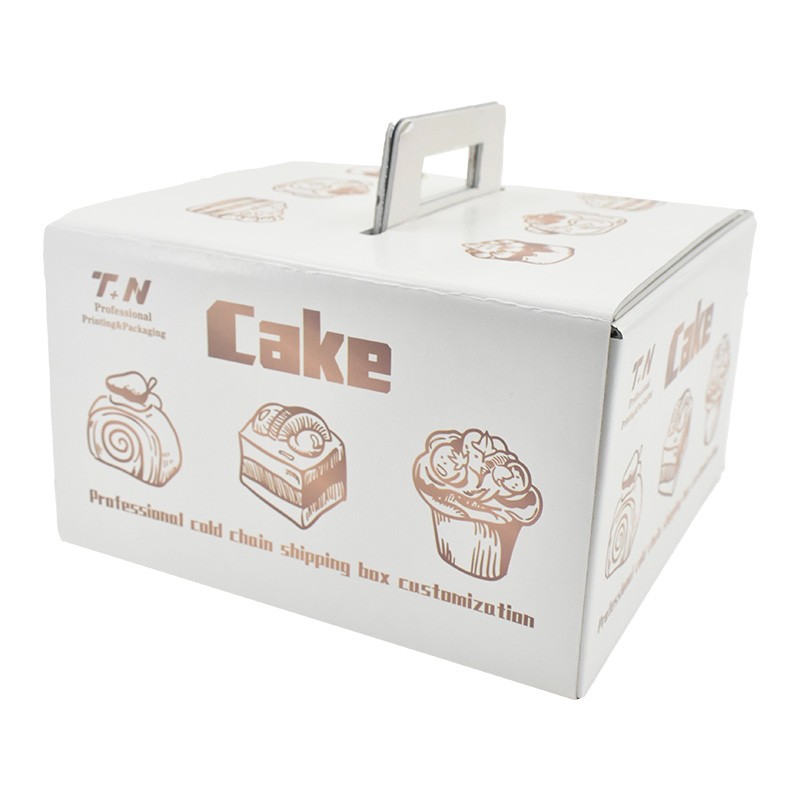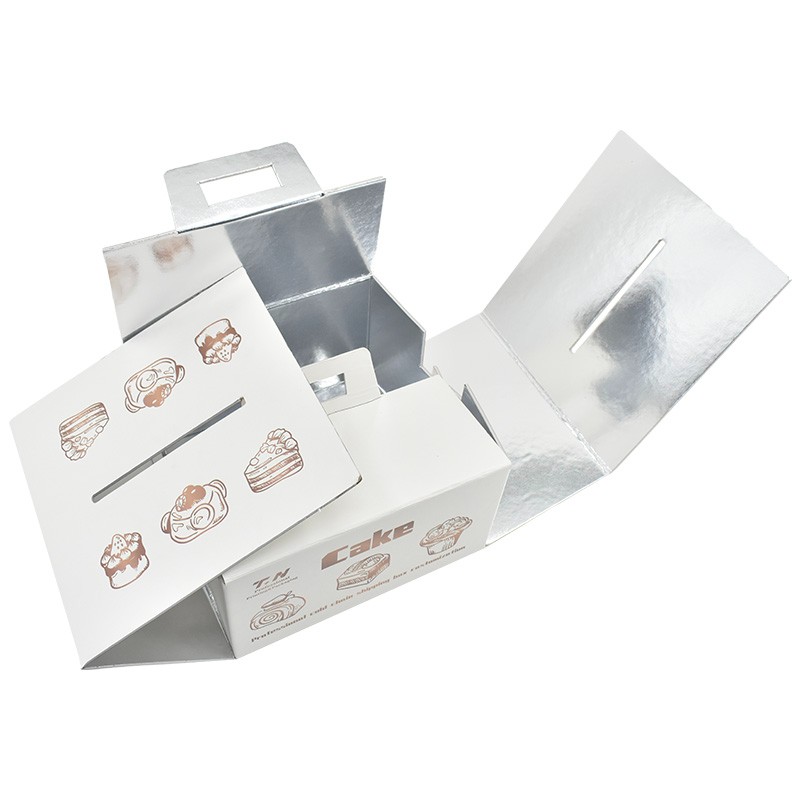Innovative Preservation Techniques in Frozen Foods

Frozen food packaging has come a long way from its humble beginnings. Consumers now have access to a vast selection of frozen foods, thanks to cutting-edge developments in packaging technology. These innovations play a vital role the ability to retain the quality of food for extended periods.

One notable advancement is the use of advanced materials. These materials are designed to prevent passage of oxygen, moisture, and other contaminants that can lead to oxidation. Furthermore, some packaging incorporates active technologies that remove off-flavors and odors, ensuring the sensory experience of frozen foods remains unchanged upon thawing.
The evolution of frozen food packaging continues to transform the industry, offering consumers a range of benefits. As research and development evolves, we can expect even groundbreaking solutions that will further enhance the preservation of frozen foods, providing consumers with safe options for years to come.
Eco-conscious Solutions for Frozen Food Containers

As individuals become increasingly aware of their footprint, the need for sustainable solutions in various aspects of life is rising. The frozen food industry, known for its convenience, faces a particular challenge in finding sustainable packaging approaches. Traditional frozen food containers often utilize non-biodegradable materials like PVC, which contribute to landfill build-up and degradation. To resolve this problem, there is a growing trend on novel sustainable containers for frozen food.
- Biodegradable Materials: Transitioning to bioplastics derived from sources offers a promising pathway for minimizing the environmental burden of frozen food containers. These materials can decompose naturally, minimizing landfill waste and encouraging a circular economy.
- Reusable Containers: Fostering the use of durable containers can substantially reduce the need for single-use packaging. Consumers can invest high-quality, BPA-free containers that are designed to withstand freezing temperatures and repeated use.
- {Edible|Biofilm| dissolvable|Containers: Research into dissolvable films made from starches is progressing. These innovative containers could potentially reduce the need for any packaging at all, as they would simply be ingested along with the food.
Furthermore, implementing optimized production processes and minimizing food waste can contribute to a more sustainable frozen food industry. In conclusion, by embracing these sustainable solutions, we can develop a more environmentally responsible future for frozen food containers.

Tailoring Material Picking for Frozen Food Packaging
Frozen food packaging demands materials that can withstand the rigors of freezing temperatures and maintain product quality. Optimal material selection is crucial for ensuring shelf stability and preventing freezer burn, thus preserving taste and nutritional value.
Considerations like barrier properties against moisture and oxygen, heat resistance, and environmental impact play a significant role in determining the most appropriate material for a particular frozen food product.
Commonly used materials include polyethylene (PE), corrugated board, and laminated foils. Understanding the unique features of each material is essential for making informed decisions that enhance both product protection and consumer appeal.
Consumer Perceptions of Frozen Food Packaging Design
The success of a frozen food product hinges on many factors, but the design of its packaging plays a significant role in capturing consumer interest. A well-designed package can entice shoppers, communicate food item qualities, and ultimately influence purchasing choices. Understanding consumer views on frozen food packaging design is essential for manufacturers to develop attractive packages that resonate with their target market.
Consumers are increasingly aware of presentation environmental impact, and they often favor brands focused to reducing their environmental footprint. Furthermore, consumers look for clear and concise information that showcase product ingredients and nutritional value.
Enhanced Shelf Life through Barrier Properties in Frozen Foods
Maintaining the quality of frozen foods during storage is paramount to ensure consumer satisfaction. This necessitates the implementation of effective preservation solutions that effectively mitigate factors contributing to degradation. Barrier properties play a pivotal role in achieving this goal by limiting the permeation of oxygen, moisture, and other potentially harmful substances into the frozen food.
- Specialized packaging materials often incorporate multi-layered structures designed to create a robust barrier against these environmental factors.
- By suppressing exposure to oxygen, rancidity can be effectively prevented, thus preserving the flavor and nutritional value of frozen foods.
- Waterproofing are equally crucial in preventing dessication, which can lead to textural changes and undesirable impacts on the overall quality.
Consequently, the incorporation of effective barrier properties into frozen food packaging can significantly extend shelf life, reduce spoilage rates, and enhance the durability of the frozen food supply chain.
The Impact of Packaging on Frozen Food Quality
Preserving the quality of frozen food hinges on the performance of its packaging. Inadequate packaging can lead to freezer burn, nutritional degradation, and an overall decline in the palatability of the product. Conversely, innovative materials that are barrier-based effectively maintain the quality of frozen food, ensuring a delicious eating experience when thawed.
Emerging Trends in Frozen Food Packaging Technology
The frozen food industry is continually adapting to meet consumer demands for freshness. As a result, packaging technology is playing an increasingly vital role in ensuring the quality and shelf life of frozen products. Novel trends are driving this evolution, with a focus on sustainability, effectiveness, and consumer experience.
One key trend is the use of sustainable materials.
Suppliers are investigating alternatives to traditional plastics, such as plant-based blends. These environmentally responsible options help to reduce the environmental impact of frozen food packaging.
Another trend is the implementation of active and intelligent packaging technologies. Active packaging utilizes ingredients that absorb unwanted gases or moisture inside the package, extending shelf life and preserving product quality. Intelligent packaging incorporates sensors or indicators that can measure the condition of the food and signal consumers when it is no longer edible.
These innovations are not only advantageous for the environment but also enhance the consumer experience. Wrappers that are more user-friendly and appealing can increase sales and customer satisfaction.
As technology continues to advance, we can expect to see even more groundbreaking trends in frozen food packaging.
Reducing the Environmental Impact of Frozen Food Packaging
The frozen food industry offers a unique opportunity when it comes to environmental sustainability. Traditional packaging materials for frozen goods, such as polystyrene, often contribute to landfill waste and pollute ecosystems. To minimize this impact, innovative solutions are gaining traction. Recyclable packaging options, along with streamlined production processes, are crucial to achieving a more eco-friendly future for frozen food.
New Designs for Convenient Frozen Food Consumption
Frozen food has evolved significantly recently, offering a convenient and tasty solution for busy individuals. ,Nevertheless the traditional method of reheating frozen meals can be time-consuming. To address this challenge, innovative designers are developing novel solutions to make consuming frozen food extraordinarily convenient.
These breakthroughs span a wide variety of solutions. Some designs concentrate on streamlining the reheating process, while others highlight portion control. Moreover, there's a growing trend toward environmentally conscious packaging and heating methods.
One noteworthy example is the development of interactive containers that can automatically heat frozen food to the perfect temperature. These containers employ advanced systems to monitor the heating process, ensuring a appealing meal every time.
Another innovative approach is the use of recyclable pouches that can be prepared directly in the microwave. This eliminates the need for separate containers, making cleanup easier.
These are just a few examples of the innovative designs emerging in the frozen food industry. As technology advances and consumer demand for convenience grows, we can expect even further transformative solutions that will redefine the way we enjoy frozen food.
Standards and Criteria for Frozen Food Packaging Safety
Ensuring the safety of frozen food is paramount, and packaging plays a crucial role in preserving quality and preventing contamination. To achieve this, regulatory bodies worldwide have established stringent guidelines governing the materials used, design, and labeling of frozen food packaging. These rules aim to minimize the risk of microbial growth, chemical leaching, and physical damage during storage and transportation. Packaging materials must be non-toxic, impermeable to moisture and gases, and capable of withstanding freezing temperatures. Moreover, clear information on the package is essential to inform consumers about proper handling, storage conditions, and potential allergens.
- Critical aspects of frozen food packaging safety include:
- Substance selection
- Design
- Labeling
- Inspection
Compliance with these regulations is vital for protecting public health and maintaining consumer confidence in the safety of frozen food products.
Exploring the future of Frozen Food Packaging Solutions
As consumer demand for convenient and sustainable food options frozen food packaging soars to new heights, the frozen food industry is transforming significantly. This evolution extends primarily to packaging solutions, with a growing emphasis on enhancing product quality while minimizing environmental impact. The future of frozen food packaging holds immense potential, driven by innovative research and a shared responsibility to create responsible packaging solutions.
- One significant development is the widespread implementation of biodegradable materials, derived from organic matter, which break down naturally leaving no trace.
- Additionally, smart packaging technologies are emerging as a key trend, incorporating monitoring systems to track product freshness throughout the supply chain.
- In conclusion, the future of frozen food packaging is full of potential, with a commitment to innovation.